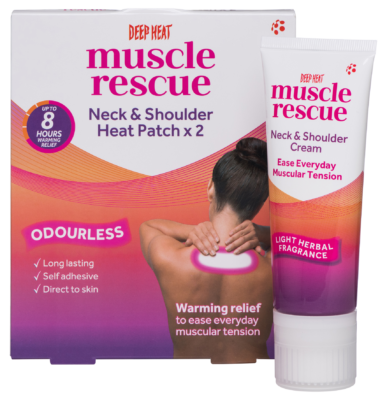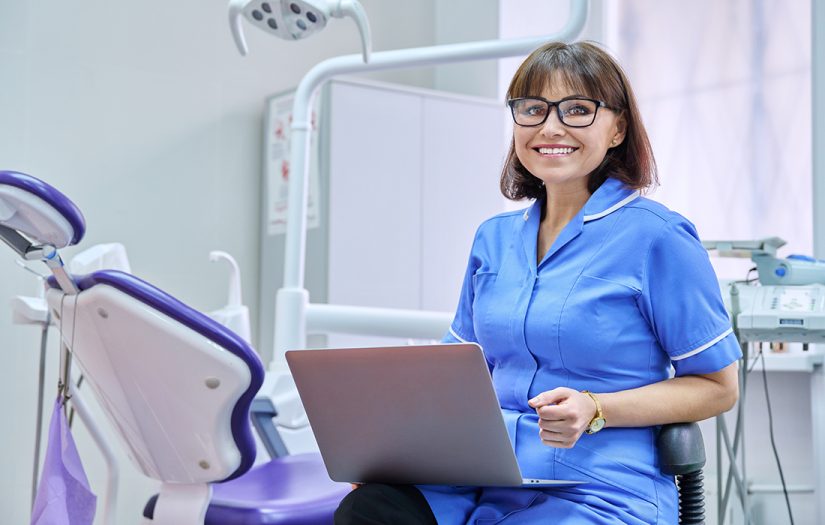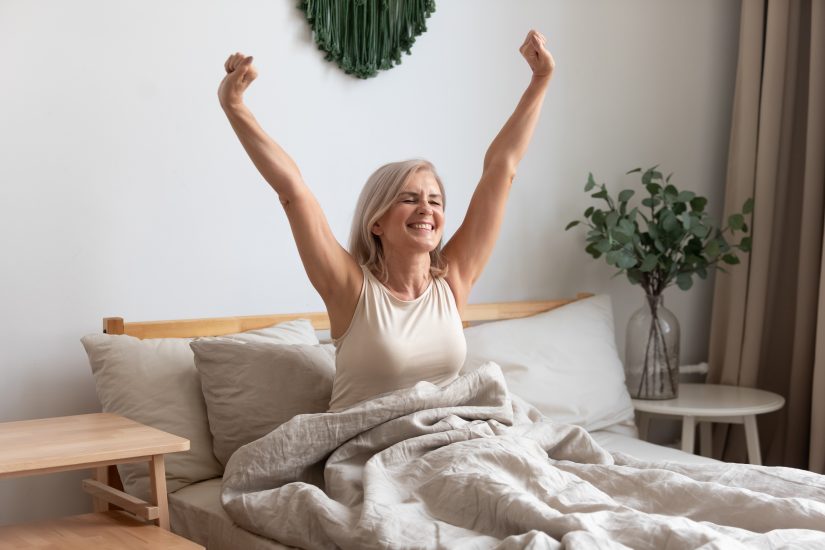Tech Neck and how to Reduce it

Another day and another new term to get to grips with – this time ‘Tech neck’.
With mobile and tablet devices becoming increasingly popular, it’s no surprise we have potential new injuries to deal with.
Daily scrolling and bending forward have helped coined the phrase ‘tech neck’ by medical practitioners. More and more physiotherapists are seeing the same patterns in older women, so we share their advice here on how to combat the uncorfortable condition.
Introducing ‘iPad Neck’
‘iPad neck’ is a persistent pain in the neck and upper shoulders caused by poor posture when using devices – such as slouching or sitting without back support while using a tablet or slumping over a device in your lap.
Women are twice as likely to experience pain and symptoms include stiffness, soreness or aching pain in the neck and upper shoulders. Researchers believe women are more affected as they have lower muscle strength and shorter arms, which could lead to more contorted positions when using their device – about 10% women, who were frequent iPad users, reported severe pain.
- TOP TIP: Physiotherapist Sammy Margo advises: “Set reminders to take a 2-3 minute break every 20 minutes of screen time. Use these breaks to do some simple exercises, like shoulder rolls and a gentle range of movements in your neck”
- Top product: Deep Heat Muscle Rescue Neck and Shoulder Cream is a drug-free warming cream designed to soothe and ease everyday muscular tension in the neck and shoulders
Solving ‘Swipe Shoulder’
44% of us regard our smartphones as our most important device and recent data shows we click, tap and swipe our mobile device almost 3,000 times a day (with heavy users reaching over 5,000 times!). But is that nagging shoulder pain linked to the arm you use on your mobile device? Neck and shoulder tension can lead to painful and debilitating pain, so it’s important to monitor how much time you spend on your mobile device and identify any twinges early on
- TOP TIP: Physiotherapist Sammy Margo advises: “It’s often the daily activities we don’t even think twice about like talking on the phone cradled on your shoulder while typing or long phone calls which can cause pain in the neck and shoulder. If you think your shoulder pain is linked to your phone use, consider buying a headset so you can talk without arching your neck.“
- Top product: voice-activated ‘Alexa’ device
Back pain and ‘screen slouch’
Whether it’s an occasional twinge or an ongoing ache, sitting at a desk for prolonged periods of time can lead to lower back pain. Bad posture, such as slumping back in your desk chair or slouching forward means your spine is out of alignment, which puts a strain on the ligaments and muscles in your back.
- TOP TIP: Physiotherapist Sammy Margo advises: ““We are currently living more inactively than ever before – spending long amounts of time sitting, often in a slouched position hunched over a computer, which can overstretch spinal structures (such as the muscles and ligaments) which can lead to back pain. I encourage my patients to talk to their employers to receive a workstation assessment – having your seat and screen adjusted will help you improve your posture. Better postures works our core muscles, which consist of our back muscles, abdominal muscles and our pelvic floor, help provide strength to keep our body upright.”
- Top product: Lumbar support which can be attached to your chair

Tackling laptop spinal stress
Some jobs require employees to use laptop computers which can be a pain in the neck, shoulders and back for female employees. If your work requires you to carry a laptop to and from the office, you could ask for a lightweight model and laptop case to minimise its impact. Alternatively, invest in a rucksack so the laptop’s weight is spread evenly across both shoulders.
- TOP TIP: Physiotherapist Sammy Margo, for advice on supporting the spine: “Try to avoid twisting your back when doing chores and bend at your knees instead of your waist when mopping, hoovering and picking up objects. Move little and often. Being inactive can make spinal pain worse so try to do as much as you can, even if it’s just going for a short walk”
- Top product: Deep Relief Pain Relief Gel contains two painkilling ingredients plus anti-inflammatory action and can be applied on-the-go to tackle muscular aches and pains










